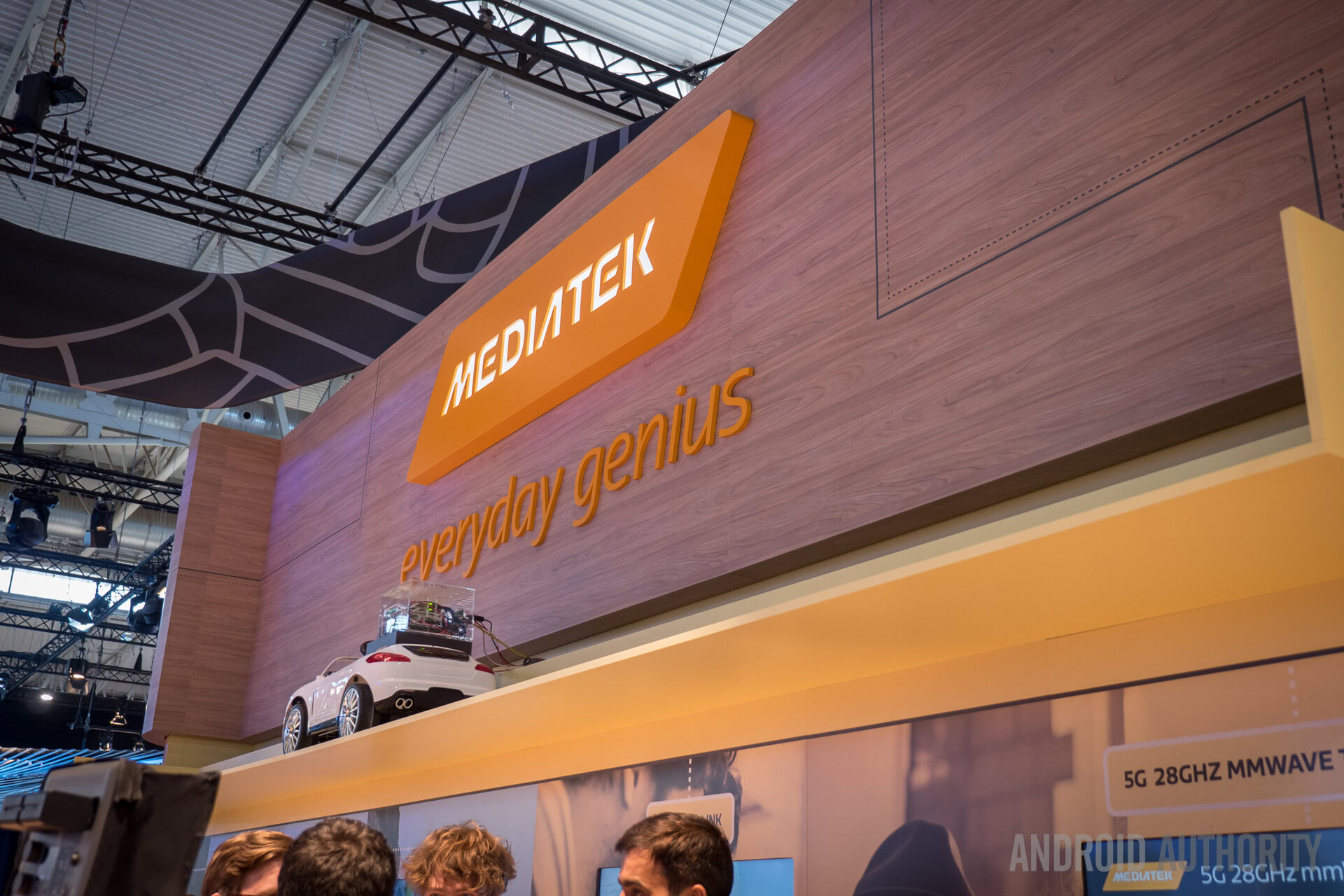Affiliate links on Android Authority may earn us a commission. Learn more.
New MediaTek Helio P60 brings AI to the mid-tier

At MWC 2018, MediaTek has unveiled its latest mobile application processor, the Helio P60. With it comes a selection of improvements over its predecessor, complete with some new hardware and tools to support the growing market for machine learning and AI applications. The announcement is in keeping with the company’s latest shift in focus to the mid-tier of the market rather than on the expensive premium end, which the company has been catering for with its Helio X series.
Let’s start with the most important announcement — some dedicated AI hardware which is a first for a MediaTek chip. Dubbed a multi-core mobile APU (AI processing unit), MediaTek’s release and website doesn’t reveal many details about the capabilities of its machine learning hardware. Sufficient to say this isn’t the same as AMD’s meaning of APU, which is just a CPU and GPU on the same die. The Helio P60 does offer some specialized hardware that’s twice as efficient as a GPU at machine learning tasks, and we will hopefully take a closer look at it soon.
This AI hardware is combined with MediaTek’s NeuroPilot AI technology to distribute tasks heterogeneously over the chip’s CPU, GPU, and Mobile APU hardware. MediaTek boasts that its platform supports a selection of common AI frameworks for developers, including Google’s TensorFlow, the Android specific TensorFlow Lite, Caffe, Caffe 2, and the company’s own NeuroPilot SDK which is compatible with the Android Networks API. ONNX support will also be coming to the chipset in Q2 2018. The chip also features the company’s CorePilot 4.0 technology and Energy Aware Scheduling (EAS), to keep the phone running comfortably with its thermal limits.
| Helio P60 | Helio P30 | Helio P23 | Helio X30 | |
|---|---|---|---|---|
CPU | Helio P60 4x Cortex-A73 @ 2.0 GHz 4x Cortex-A53 @ 2.0 GHz | Helio P30 4x Cortex-A53 @ 2.3 GHz 4x Cortex-A53 @ 1.65 GHz | Helio P23 4x Cortex-A53 @ 2.3 GHz 4x Cortex-A53 @ 1.65 GHz | Helio X30 2x Cortex-A73 @ 2.5 GHz 4x Cortex-A53 @ 2.2 GHz 4x Cortex A53 @ 1.9 GHz |
GPU | Helio P60 Mali-G72 MP3 @ 800 MHz | Helio P30 Mali-G71 MP2 @ 950 MHz | Helio P23 Mali-G71 MP2 @ 770 MHz | Helio X30 PowerVR GT7400 Plus @ 800 MHz |
Memory | Helio P60 32-bit dual channel @ 1800 MHz LPDDR4X | Helio P30 32-bit dual channel @1600 MHz LPDDR4X | Helio P23 32-bit dual channel @1600 MHz LPDDR4X | Helio X30 16-bit quad-channel @ 1866 MHz LPDDR4X |
Cameras | Helio P60 16 + 20 MP dual or 32 MP single | Helio P30 16 + 16 megapixel (with CCU + VPU) | Helio P23 13 + 13 megapixel (with CCU) | Helio X30 16 + 16 megapixel (with CCU + VPU) |
Process | Helio P60 TSMC 16/12nm FinFET | Helio P30 16mn FinFET | Helio P23 16mn FinFET | Helio X30 10nm FinFET+ |

The rest of the SoC will appear fairly familiar to those who follow smartphone processor hardware. The Helio P60 boasts a big.LITTLE octa-core configuration, arranged as an Arm Cortex-A73 clocked at 2.0 GHz paired up with the smaller Cortex-A53 also running at 2.0 GHz. The GPU is a newer Mali-G72 MP3 and the chip is built on TSMC’s 16/12nm process. MediaTek boasts performance improvements of up to 70 percent in both CPU and GPU situations compared with its previous generation products, thanks to the to the introduction of the bigger CPU cores and the updated GPU. The package is also more energy efficient, clocking in at around 12 percent more efficient than the Helio P23 in CPU terms, and can save up to 25 percent on more energy demanding games.
Finally, the Helio P60 boasts three improved image signal processors that are up to 18 percent more energy efficient that before when powering dual camera setups. The chip also includes a 4G LTE worldwide modem, dual VoLTE support, and TAS 2.0 smart antenna software to ensure that you’re connected whever you venture.
MediaTek states that smartphones powered by the Helio P60 will arrive in global markets in early Q2 2018.